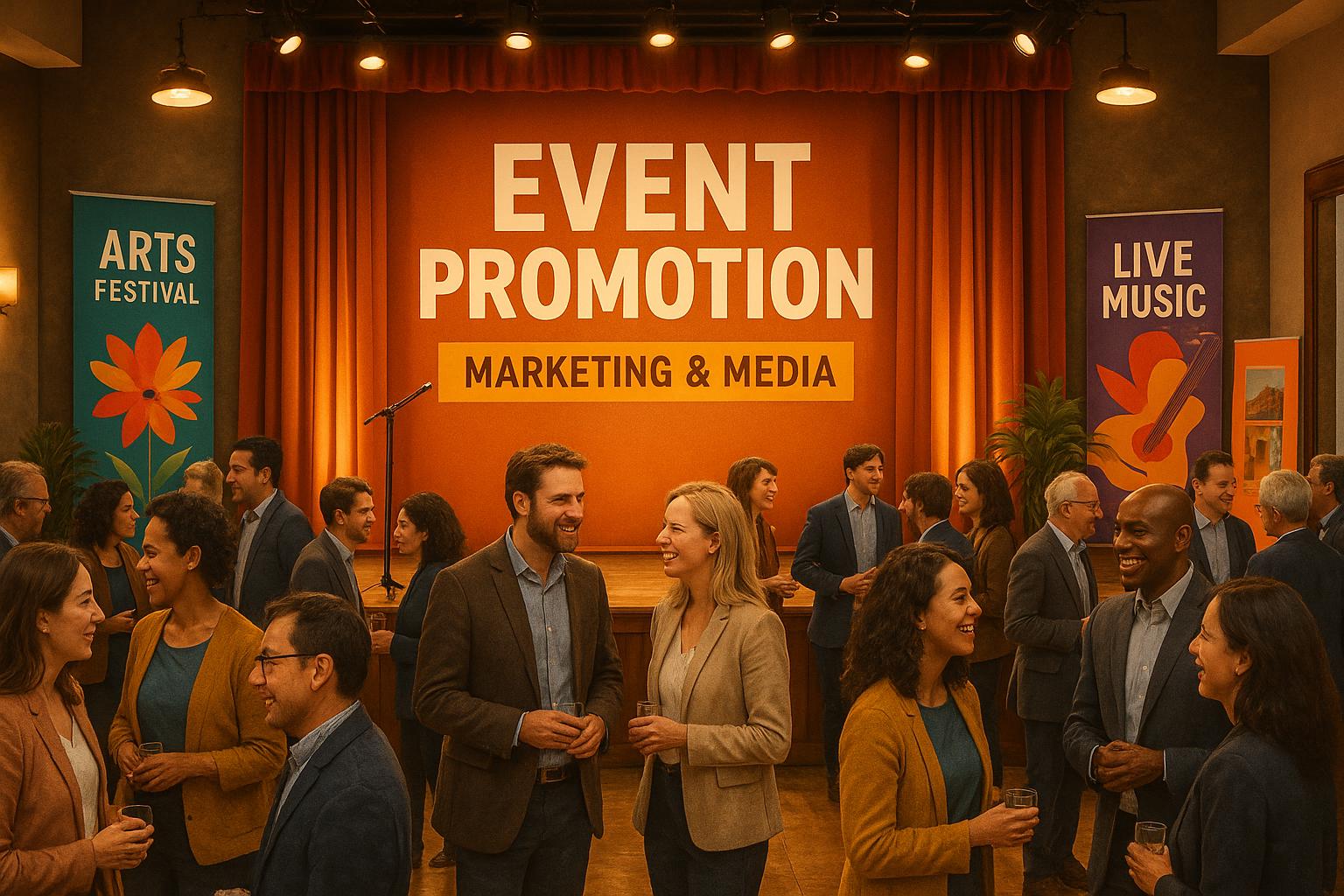In the world of independent artists, event promoters, and venue owners, events are much more than just gatherings - they are opportunities to create meaningful connections, drive business growth, and enhance brand perception. But many still struggle to treat events with the strategic rigor they would apply to other aspects of their business. This article dives deep into a transformative framework for treating events as products, a mindset shift that can revolutionize the way you plan, execute, and measure success.
Drawing from insights shared by Lisa Gregory, Brent Turner, and Marissa Noski during a recent Event Professionals Network meetup, this article breaks down actionable strategies and principles that will help you create impactful and measurable events. Whether you’re a solo artist hosting intimate gatherings or a venue owner managing large-scale productions, these insights are designed to empower you to think strategically and achieve tangible results.
Why Events Are More Than Just Logistics
Events as Products: The Game-Changing Mindset
One of the most transformative takeaways from the discussion was the idea of treating events as products. This mindset shift underscores the complexity and value of events, elevating them beyond being mere logistical undertakings. Why is this important? When events are viewed as products, they demand a strategic approach that encompasses design, branding, marketing, and measurement - just like any tangible product you might sell.
Brent Turner explained it best:
"My event has an experience design like a product. It has its own brand, go-to-market strategy, measurement plan, and financials. By thinking this way, you’re no longer a party planner - you’re a creator of a product that drives business outcomes."
This perspective doesn’t just change how you approach your work; it changes how stakeholders perceive the value of events. CEOs and decision-makers are more likely to see your events as integral to the company’s growth rather than as optional expenditures.
The Key Elements of Strategic Event Planning
1. Define Your Event’s Purpose
Every successful strategy starts with clarity. According to Turner, the first step is identifying your event’s single-minded focus - what is the core purpose of your event?
For instance:
- Is your event a lead-generation tool?
- A closing event designed for deal acceleration?
- A community-building initiative to foster loyalty?
Determining this focus will act as your guiding star, ensuring that every decision aligns with the event’s overarching purpose.
2. Know Your Audience: Event Personas vs. Buyer Personas
Traditional marketing often revolves around buyer personas, but successful event professionals take it a step further by developing event-specific personas. This means understanding not just who your audience is, but how they engage with events.
Lisa Gregory emphasized this critical distinction:
"Think about your audience’s ability to attend. Do they have the time, budget, or interest to travel? If someone’s working remotely in their basement with a cat, they may not want to attend in-person events. Build personas that reflect event behaviors, not just buyer demographics."
By tailoring your format and content to these personas, you optimize attendance and engagement - for example, offering webinars for time-strapped audiences or creating immersive, in-person experiences for those seeking hands-on interactions.
3. Build a Product-Like Go-to-Market (GTM) Strategy
Just like launching a product requires a comprehensive marketing strategy, so does hosting an event. Gregory outlined the three critical phases of an event-specific GTM plan:
- Pre-Event Campaigns: Generate anticipation and excitement with creative, engaging marketing efforts. For example, tease exclusive experiences or showcase testimonials from past attendees.
- On-Site Experiences: Create an "event within an event" by layering experiences. These could include coffee chats with key leaders, live demos, or interactive workshops.
- Post-Event Follow-Up: This is where many event planners falter. Ensure there’s a robust post-event strategy in place to nurture leads, follow up with attendees, and maintain momentum.
4. Make Events Measurable
As Marissa Noski pointed out, a strong strategy is rooted in measurement and accountability. Without clear metrics, it’s impossible to prove your event’s ROI. Here are some actionable tips:
- Tie Events to Business Goals: Understand the role your event plays in the sales funnel (e.g., top-of-funnel lead generation, mid-funnel engagement, or bottom-of-funnel deal acceleration).
- Fix Attribution Models: Events often get overlooked in "first-touch" attribution models. Work closely with marketing ops to ensure events receive proper credit within your CRM tools.
- Track Impact Over Time: If your sales cycle is six months, adjust your reporting cadence to match. Don’t expect immediate results - align reporting to reflect long-term performance.
5. Tackle the Swirl: How to Address Challenges Early
Even the best-laid plans can hit turbulence. Turner and Noski referred to this as the "swirl" - the chaos and misalignment that often arise when stakeholders have competing priorities or when strategic focus is lost. Their advice? Pause and realign.
"Sometimes you just need to pull the boat to the side of the river and stop", Turner noted. "Find the core of the problem and address it before moving forward."
Practical ways to reduce the swirl include:
- Building in regular check-ins with your team and stakeholders.
- Actively communicating what’s working and what isn’t.
- Using tools like AI to simplify reporting and maintain clarity.
Event Strategy in Action: Real-World Examples
To illustrate these principles, the speakers pointed to Salesforce, a company renowned for its mastery of event strategy. Salesforce treats its events as distinct products with individual purposes:
- Dreamforce: Their flagship event is designed as a closing tool to drive end-of-year deals.
- World Tour: Focuses on accelerating pipeline.
- Boot Camps: Targeted at generating new leads.
This clarity of purpose, combined with attendee-first value propositions, ensures that their events not only align with business goals but also deliver unforgettable experiences.
Key Takeaways
- Think of events as products: This mindset elevates their value and aligns them with business priorities.
- Define a single-minded focus: Every event should have one core purpose that drives decisions.
- Develop event personas: Understand your audience’s preferences, behaviors, and constraints when designing experiences.
- Create a formal go-to-market strategy: Ensure you have pre-event, on-site, and post-event plans in place.
- Measure what matters: Tie event metrics to business goals, adjust attribution models, and align with your sales cycle.
- Address the swirl: Recognize challenges early, pause when necessary, and realign your efforts.
- Engage stakeholders: Build trust and collaboration by showing what’s in it for them and creating interactive presentations.
- Leverage AI: Use tools to streamline reporting, planning, and stakeholder communication.
Final Thoughts
The evolution of events as strategic assets requires a shift in mindset and approach. By treating events as products with clear goals, measurable outcomes, and tailored experiences, you’ll not only elevate their value but also position yourself as a results-driven professional. Regardless of the size of your team or budget, these principles can help you create events that are not just memorable but transformative for your audience and your business. Take the time to strategize, simplify, and execute with focus - and watch your events become powerful tools for growth.
Source: "Unlocking Event Strategy | 5 Tactics for Business Growth" - Event Professionals Network Podcast, YouTube, Aug 26, 2025 - https://www.youtube.com/watch?v=MJNreXp5EjI
Use: Embedded for reference. Brief quotes used for commentary/review.

